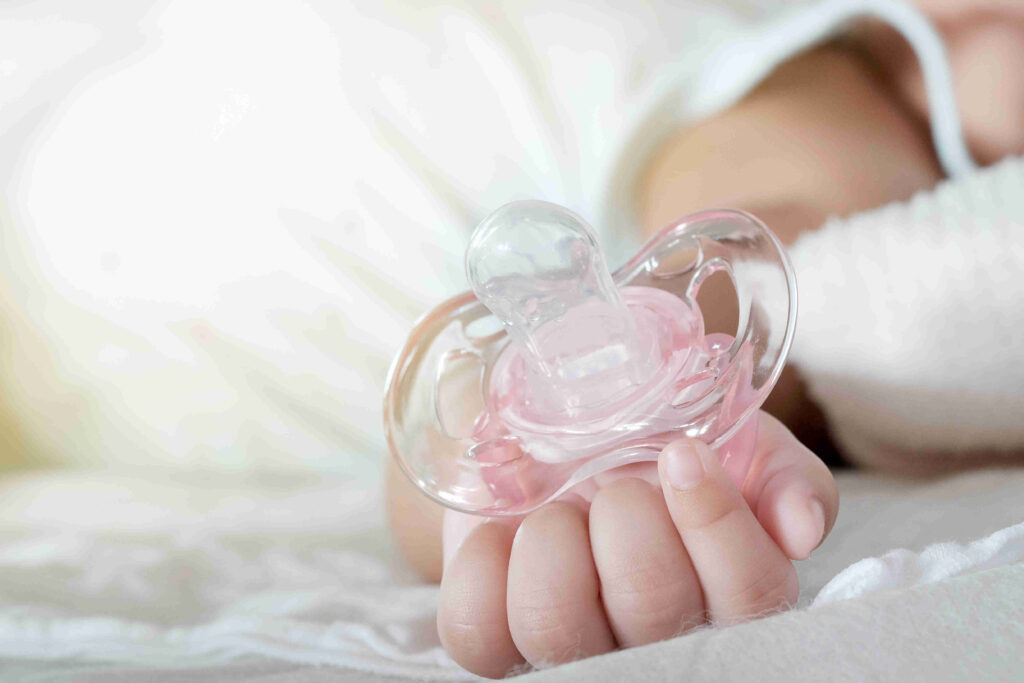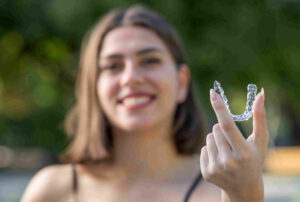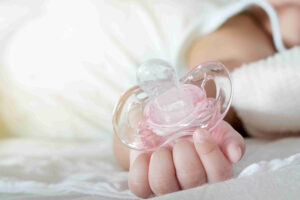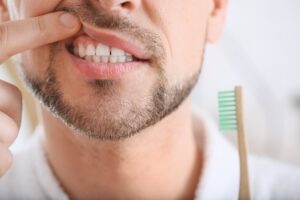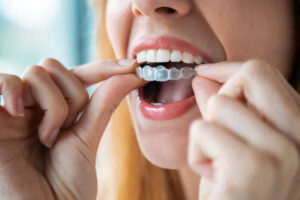Pacifiers, widely adopted as comforting tools for infants, offer soothing relief and a feeling of security. Nevertheless, parents must grasp the potential effects of pacifier usage on their child’s orthodontic well-being. In this blog, Vibrant Square Dental will look into the correlation between pacifiers and orthodontic problems, unveiling the potential long-term consequences, and presenting responsible approaches to pacifier use.
The Role of Pacifiers in Orthodontic Concerns
Extended pacifier use in children can potentially contribute to various orthodontic issues. While not all children who use pacifiers will experience these problems, it is essential to be aware of the potential risks associated with their use. Below are some orthodontic problems that can arise due to pacifier use:
1. Malocclusions: Prolonged pacifier use, especially beyond the age of three, can result in dental malocclusions. These misalignments may include an open bite (a gap between the upper and lower front teeth when the jaws are closed), an overbite (upper front teeth excessively protruding over the lower teeth), or a crossbite (upper teeth biting inside the lower teeth).
2. Dental Arch Development Issues: The continuous pressure from a pacifier can interfere with the natural growth and development of dental arches, leading to narrow arches, crowded teeth, or improper teeth positioning.
3. Palate Changes: Long-term pacifier use can influence the shape and size of the palate, resulting in a high and narrow palate. This can affect speech development and the proper alignment of upper and lower teeth.
4. Thumb-Sucking Habits: Although not directly related to pacifiers, children who use pacifiers may have a higher tendency to develop thumb-sucking habits. Prolonged thumb-sucking can also lead to similar orthodontic problems, such as misaligned teeth and changes in jaw position.
Additional Complications Arising from Extended Pacifier Use
Apart from orthodontic concerns, prolonged pacifier use may give rise to several other dental issues that should be considered:
1. Dental Decay: Prolonged use of pacifiers can lead to bacterial buildup, especially when not adequately cleaned or when exposed to sugary substances. The continuous exposure of teeth to the sugars in pacifiers or saliva-soaked pacifiers heightens the risk of dental decay and the formation of cavities.
2. Speech Development Problems: Extended pacifier use can interfere with proper tongue placement and hinder the development of crucial oral motor skills essential for speech production. This may result in speech delays or difficulties with articulation.
3. Challenges with Oral Hygiene: Pacifiers can create difficulties in maintaining proper oral hygiene. Bacteria can accumulate around the pacifier, and if not cleaned adequately, it can raise the risk of oral infections like thrush (oral yeast infection).
4. Nipple Confusion: In breastfed infants, the early introduction of pacifiers may lead to nipple confusion, making it harder for them to latch onto the breast correctly. This could potentially impact breastfeeding success and maternal-infant bonding.
5. Tendency to Mouth Breathe: Prolonged pacifier use might encourage mouth breathing instead of nasal breathing. Mouth breathing can cause dry mouth, increase susceptibility to dental decay, and potentially influence facial growth and development.
Preventive Measures While Using Pacifiers
It’s crucial to note that these dental issues are associated with excessive and prolonged pacifier use. Responsible and limited pacifier use, coupled with proper cleaning and hygiene practices, can help reduce the risk of developing these dental problems. Regular dental check-ups for your child, along with open communication with a pediatric dentist, can ensure early detection and intervention if any dental issues arise. If your child uses a pacifier, there are steps you can take to reduce the risk of orthodontic problems:
1. Limit the duration of pacifier use: Gradually reduce pacifier use as your child approaches their first birthday and discontinue it entirely between ages two and four.
2. Choose an appropriate pacifier: Opt for orthodontic pacifiers that are designed to support proper jaw and teeth development.
3. Encourage positive oral habits: Focus on teaching your child good oral habits, including proper teeth brushing and regular dental check-ups. Consult with your dentist if you want specific age appropiate techniques for your child.
4. Break the thumb-sucking habit: If your child tends to suck their thumb, work on finding ways to discourage this habit, as it can have similar effects on oral development as pacifiers.
Professional Treatment For Orthodontic Problems
Although pacifiers provide comfort to infants, it’s essential to exercise caution regarding prolonged usage to prevent potential orthodontic problems. If you need advice from a dentist, feel free to reach out to Vibrant Square Dental in Vaughan, ON, at 905-553-3004. Our dental clinic offers outstanding oral care services to rejuvenate your oral well-being. With 30 years of experience, we specialize in a comprehensive array of treatments, including cosmetic, restorative, and general dentistry.

